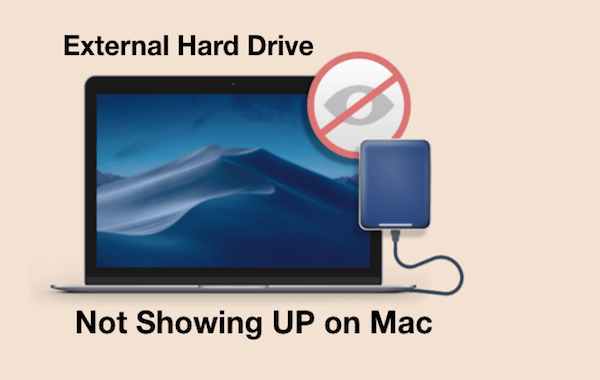An external hard drive when connected to Mac’s USB port is easily visible both on the desktop and in the Finder in the left-hand column under Devices. However, there are certain instances in which the external hard drive doesn’t show up on your Mac.
Indeed this situation can be annoying when you have to transfer data in demanding situations and your Mac couldn’t recognize the plugged hard drive. Your desktop may be recognising the drive but not reading it. But don’t panic as your data is still safe on the external drive, it’s just that, you are not able to access it on your Mac.
With this article, we will provide you with the best troubleshooting alternatives to fix this problem that is creating an obstacle for your hard drive to mount on desktop.
It is to be noted that before you put your Mac to work with system troubleshooting methods, it is advisable you start with the basic visual inspections. Let’s look at the solutions listed below:
1. Check if the file system of the external HDD is recognisable:
- The reasons behind for not showing up of your hard drive could be many but in most probable cases this issue is caused by system junk and occurs when your drive has not been formatted correctly, or has corrupted system settings, or has faulty connections.
- Reformat your external hard drive that has non-native file systems like Linux EXT3 and EXT4 as they are not compatible with Mac.
- The recently installed apps can be potentially conflicting that causes the drive to not show up on your device. So try uninstalling them to see if the issue is resolved.
- If you are using Mac version 10.12 or earlier but the drive is APFS formatted, then you need to update your device to make it compatible with latest software and file systems. This will fix your issues of external HDD connectivity.
2. Check if the external drive is properly plugged in:
The first thing you need to do is verify that the USB cable or HDMI cable of the drive is connected properly, if not, the drive won’t appear on your desktop.
3. Check the USB connectivity or Faulty cable:
The cable could be at fault sometimes, so you can try connecting with a different cable. Also, it is possible that the external HDD is not properly connected to the USB port. In such cases: try reconnecting with the same or another compatible port, if problem still persists, change the cable and reconnect. You may also connect your drive to another Mac to check if it’s working on it.
4.Incorrectly formatted drive/ Change the incorrect drive format:
You should know that not every external drive is optimised for Macs. You need to check if you have incorrectly formatted drive by going to toolbar menu and Click on Apple > ‘About this Mac’ appears > Click on ‘Storage’. Now see if the drive shows up here.
5. Reboot your Mac:
Try restarting your Mac device to clear the macOS’s memory and start it up fresh. You can reboot your Mac by choosing the Apple menu > Restart.
6. Reset your Mac’s NVRAM:
NVRAM helps in retaining the information while power is turned off. On applying this method chances are that your hard drive shows up. For that, you need to shut down and restart your Mac device and immediately press 4 keys in a sequence and hold it for at least 20 seconds i.e. Option, Command, P, and R and release by the second startup chime.
7. Check disk utility to access the drive:
You can also check the Apple’s disk utility available in system preferences to detect any external drive connectivity. If the drive is visible, click on Mount option to make it visible on Finder menu and desktop screen as well.
8. Mac not formatted to display external drives:
As already mentioned it is possible that your device is recognising the external drive, but not reading it to show up on screen. However, the drive will still appear in the left-hand column of the Finder menu under Devices. From there you will be able to access the drive. Go to Finder menu > Preferences > General to check and ensure that external drives appear on your desktop too.
Concluding remarks
Evidently the situation can become quite complicated for a user at a time due to not showing up of external hard drive on Mac. So, it is advised that you remain calm and apply the afore-mentioned troubleshooting methods to fix the issue.
Although the above methods are of significant help to your Mac to detect or recognize the external hard drive, primarily you can start with properly ejecting or re-connection of the external drives.
You must unmount the external drive properly after use. Further to save your important data, it is advised that you always create backup of critical files in cloud or on another drive. This will ensure the safety of your data in all unforeseen events.
Also Read:

